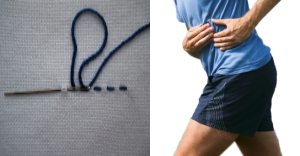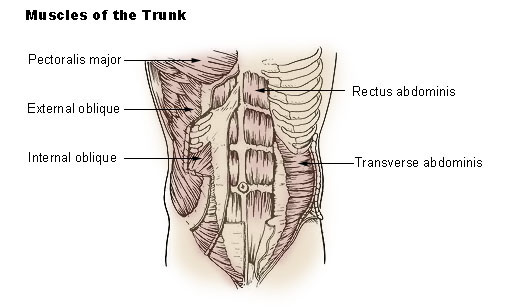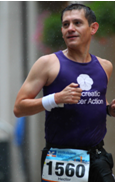Learn more about running stitches
How many times are we running and then suddenly a pain in the abdominal area occurs, we try to push further and the pain is still there, we try to lower the pace and the pain remains until, at some point, it becomes so strong that we are in the necessity to stop our training.
This kind of pain is colloquially known as: side ache, a side cramp, a side crampie, a side sticker or simply a stitch (nothing related to “Running stitches”)

“Running stitches vs jogging stitches”
Medically this kind of pain is known as exercise-related transient abdominal pain (ETAP). ETAP is a widely experienced but poorly understood problem (1), affects 40-60% of the physically active population, is detrimental to performance but of unknown aetiology (2).
CAUSES
The actual cause is a topic that is been studied and debated, and there is still no definite answer. However researchers have tried to identified the causes and many theories have come out.
There is the common think that this abdominal pain is due to changes in blood flow to the viscera or due to stretching of visceral ligaments (3) may be caused by the internal organs pulling downwards on the diaphragm. Therefore excessive movement of abdominal peritoneum can be one proposed mechanism. However ETAP, has been experienced on low impact exercise like swimming (4) where the internal organs (as liver, stomach or spleen) are not pulling downwards on the diaphragm.
Based also on excessive movement of abdominal peritoneum, Mole and cols. (2013) suggested that the function of a muscle called Transversus abdominis (TrA,view figure 2) may play a role reducing in the incidence of ETAP. They found that participants who had stronger trunk muscles and larger resting TrA size experienced ETAP less (2)

Figure 2.
Some other studies suggest that drinking high-sugar beverages before exercise increases the likelihood of stitches (3). Contrary to popular belief, drinking while running does not cause side stitches. But it was also found that drinking large quantities immediately before exercise is associated with exercise-related stitch (5).
Training status alters the frequency of occurrence of ETAP but has little effect on the incidence or severity of the pain. Further, ETAP appearance seems to be decreased by the age but is not related to gender or body-mass-index (1).
Last but not least, one study suggests that the postural abnormality, particularly in the thoracic region, influences the experience of ETAP but not the body type (6) .
So as you can see, scientists are not sure why the abdominal pain appears but runners coincide in how disturbing it is when it comes.
PREVENTION
Food and drinks
Foods that are higher in fat and fiber take longer to digest, therefore trying to avoid eating them within one hour before running would prevent ETAP. If you use to drink water before running try to stick to normal water rather to sugary or carbonated drinks.
Warm up
Investing some minutes in warm up will give your muscles, bones, and joints a chance to loosen up; will also brings up your heart rate smoothly and will prevent injuries later on. Further, warming up can help to prevent ETAP.
Breath
The most effective way to prevent side stitches is to avoid chest breathing, concentrate on your belly rather that your torax. Deep belly breathing allows you to take in more air, then try to breathe from your belly and not your chest. Deep breathing is also difficult while running in extreme cold, now that winter is coming try breathing through a scarf or neck warmer. Match the breathing to your pace: inhaling and exhaling for two strides. Follow a rhythm, as faster pace more frequency in breathing. Trying to breathe in and out through your mouth will also help.
Position
The good running form and posture would influence on your deep breaths and it will contribute to face ETAP. Therefore, pay attention to your position.
WHAT TO DO IF THEY UNFORTUNATELY APPEAR?
1) Gently pushing your fingers or your forearm into the area where you are feeling the stitch that should help relieve some of the pain. Sometimes stretching the trunk helps.
2) Try altering your breathing pattern. Take a deep breath in as quickly as you can, to force the diaphragm down. Hold your breath for a couple of seconds and then slowly exhale through your mouth. Try changing your breathing pattern. Inhale when the foot, opposite to the side where the stitch is, strikes the ground; try exhaling when the other foot strikes.
3) If all above do not work then stop running and walk for some meters while taking some deep breaths. Then slowly begin running trying to get your pace and breathing rhythm.
This post was written to provide information rather than advice
_______________________

Héctor is a runner during mornings and a Neurophysiologist during days. He lives in Germany and he runs for two motivations: his 4 year old Son who is living in Mexico and to raise funds for “The Myasthenia Gravis Association” since he has been diagnosed with this disease.
If you would like to support him please go to: http://www.justgiving.com/Hector-Romo-Parra
REFERENCES
- Morton DP, Callister R. (2002) Factors influencing exercise-related transient abdominal pain.Med Sci Sports Exerc. 2002 May;34(5):745-9.
- Mole JL, Bird ML, Fell JW. (2013)The effect of transversus abdominis activation on exercise-related transient abdominal pain. J Sci Med Sport. 2013 Jul 10. pii: S1440-2440(13)00144-8. doi: 10.1016/j.jsams.2013.05.018. [Epub ahead of print]
- Plunkett BT, Hopkins WG. (1999) Investigation of the side pain “stitch” induced by running after fluid ingestion. Med Sci Sports Exerc. 1999 Aug;31(8):1169-75.
- Otto AC, Rona du Toit DJ, Pretorius PH, Lötter MG, van Aswegen A (2010). The effect of exercise on normal splenic. Clin Nucl Med. 2010 Oct;20(10):884-7.
- Pauwels, N. (2012) BET 1: Is exercise-related transient abdominal pain (stitch) while running preventable? merg Med J 2012;29:930-931 doi:10.1136/emermed-2012-201952.2
- Morton DP, Callister R. Influence of posture and body type on the experience of exercise-related transient abdominal pain. J Sci Med Sport. 2010 Sep;13(5):485-8.
All images were taken from Wikimedia Commons and they are registered under Creative Commons license.



